My Epic V12 story started in 2009 when I got the first V12 1g on the East Coast. I paddled it for 3 months, reviewed it and sold it to my training partner Tim who paddled it for years. The 1G had a distinctive roll but once you got used to it, it had a lot of secondary stability. It was an excellent all around ski, fast on the flats or in the ocean. It was at its worst going up wind on the quarter beam with the bow not wanting to track straight and getting blown around. I was lighter back then, and now after many hearing many impressions of the V12, heavier paddlers enjoyed this ski even more. Shortly after that I got my first of many Stellar SES 1G’s. Tim and I had years paddling these two skis side by side in all conditions. The SES picked up the bumps slightly better and was more stable, but the V12 bucket was great and more ergonomic(better leg drive) while the speeds was virtually identical.

Tim and I tying for 1st place together at the 2010 Essex Race in our V12(1G) and SES(1G).
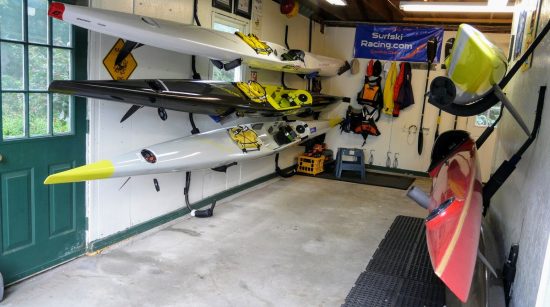
Garage 2009, V12 1G, Legend, Uno 1G, Evo 1G, Sino, Valley Rapier
_________________________________________
Epic V12 2G
Description of V12 from the Epic Website.
The Epic V12 is designed to be the ultimate downwind machine for elite level paddlers. The updated design has more rocker, a reconfigured cockpit for a drier ride and a more responsive rudder position, all while keeping a hint of extra stability over our V14.
After testing several prototypes in locations around the world, we feel this is the best surfski for elite, open-water paddling, especially in big downwind. The V12 is faster than the V10 on flatwater and is a good choice for those looking to move up. Highly skilled elite level paddlers with perfect stability skills will find the V14 slightly faster on flat water. But as soon as the wind and waves pick up the new V12 will be their weapon of choice. Mere mortals who want a really fast boat on flat water that can also handle rough stuff will find a good fit in the new Epic V12.
The stability is similar to the original V12. It is noticeably more stable than the V14, but less stable than the Epic V10. It has similar flatwater speed to the original V12, but is far superior in surf conditions.
A few months before the April 2017 Sharkbite Race in Florida, my excitement began to grow for the V12 2g. I would be traveling down to the race and would be able to demo the V12, the Ion 3G, and the Evo 3G. I raced the Ion 3G with a 30 minute warmup, posting a good time in a ski I paddled for the first time. As soon as the race was over, I borrowed Randall Taylor’s new V12 and took it for a 10 minute spin. I loved it, bucket was super, stable, turned nicely and despite post race fatigue, it had good speed. I knew then I wanted one so I called Eric Costanzo on the way back to my sister in law’s condo in Estero, FL, and told him I wanted one.
A month later on June 10th, Tim and I made the long drive down to Eric’s place in NJ to pick up our new V12’s. We got back to Tim’s house in Jamestown, RI and quickly put the rudders on and launched from our familiar site, Bay Voyage. Adrenaline, anticipation, and new boat dynamics was flowing on a lumpy day in Jamestown. Tim and I paddled hard down to House on the Rocks and back to the Newport Bridge. All my experience of paddling advanced skis automatically kicked in. It was a above average day with a mixture of wind, chop, current that most of the New England racers have experienced over the years in Jamestown. Neither Tim or I capsized in our 8 mile first paddle of our new V12’s.

Almost four months have now passed since I bought the V12 2G. These four months are the bulk of our race season so I was often paddling other skis like my Evo 2/3, SEI, Ion 3g, Sel, Uno, 560 so I don’t have as many miles as I normally would in the V12. I was not able to race the V12 due to lack of time in it or race conditions were above my skill level in the V12.
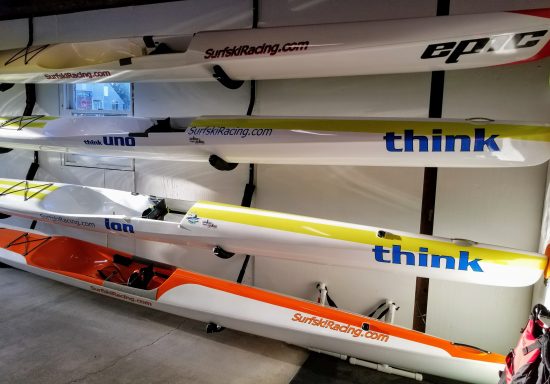
Advance Skis: V12 2G, Uno 2G, Ion 3G, SEL 2G
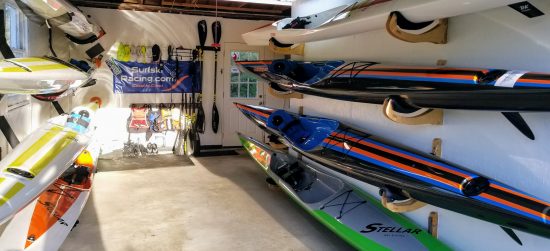
Right side: Top Nelo 560M, Evo 2, Evo 3, SEI. SR in basement.
However, I did paddle it for 77 miles, did (7 ) 1.63 mile GPS time trials, and paddled it a variety of conditions. After my initial few paddles in the V12, I made some adjustments. First of all, I changed out the foot strap to a more robust strap that does not flop down upon remounting and will support my Garmins. This took about an hour since the foot strap is integrated into the mounting of the footplate. Secondly, I bought a number of rudders to optimize the use of this ski. I used a 7 inch, 8 inch DK rudders along with the Universal rudder supplied by Epic for ocean paddling along with the Epic weedless rudder(not used) and a couple of shorter DK rudders for flat water. I have the large Epic surf rudder too. Historically, Epic has been lagging in the rudder department but just recently they announced their new line of rudders which will help to optimize the performance of their line. I also put some padding at my calves for better contact.
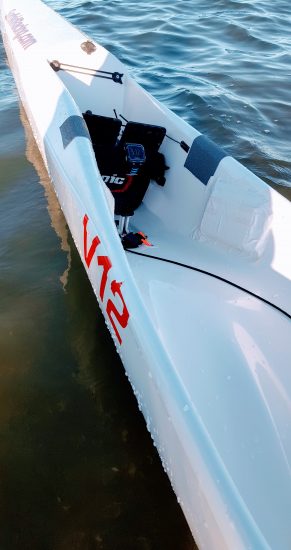
Toe pedal bungee, Calf pads
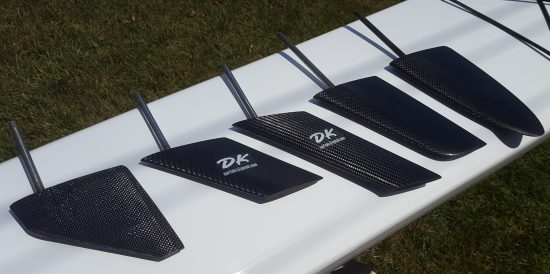
V12 Rudder Selection
Background
While I have no insider information on the design of the V12 2G, I can only imagine Epic finally decided they needed a ski that surfed well. Historically, their ski design leaned toward minimum rocker making their skis fast on flat water compared to other brands while giving up some speed and stability in bigger conditions. The brand of ski known to surf well is Fenn. My own experience bears this out having owned the Mako 6, Glide(less rocker), Spark, Mako XT, and paddled the Swordfish, and Fenn Elite S. Over the years in many of the well known international races, the Fenn skis tended perform well in comparison to the other brands with exceptions of course. However, the Fenn had it drawbacks of deep, narrow buckets, and favored the better paddlers due to stablility. Another brand known to surf exceedingly well over the years and that is Huki. My S1X Special is still my favorite surf ski for guys at my level. It would be nice if Huki came out with a 3G version with an updated bucket(lower hump and more toe pedal adjustment). Most recently the 2017 Think Ion 3G is also an excellent downwind ski. All this background is a long way of saying Epic needed to design an Elite or Advanced ski to compete with the Fenns in downwind conditions. Think of Mercedes competing with BMW. BMW’s have been the gold standard along with Porshe for handling dynamics, connecting the driver with the car to the road.
For years the major brands have focused on designing all purpose skis in each of the 3 broad categories of skis: novice, intermediate, advanced. Now however, with the launch of the V12 2G and the V11, the market is in the beginning phases of specialized skis for specific conditions. Most experienced, well informed paddlers, realize that some skis do perform better in different conditions. So if you are the market leader like Epic with a broad range of models, it makes sense to further broaden your line with two niche advanced skis, the V12 and V11.
My V12 Experience
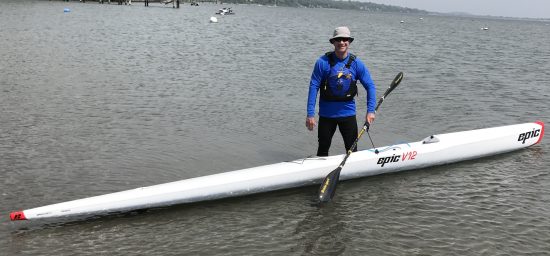
Having reviewed so many skis over the years, with few exceptions, I can get a good sense of how a ski performs in comparison to other skis with a 15 minute demo. One of these exceptions was the V12. I was so excited about the V12 after I paddled it at Shark Bite. I loved this ski. The problem was, I paddled it directly after I raced the Ion 3G for the first time. The Ion 3G that I now have many miles on it and really like, seemed a touch unstable for me at the Sharkbite. Remember this was my first time in it. So when I jumped into the V12 that day, it felt very stable for me with the enduring relaxed and comfortable Epic bucket. I only paddled it for 15 minutes but I knew I immediately wanted one. Now skip to June where I paddled it for the second time in Jamestown(not flat). I realized quickly it was not as stable as I had remembered, no way, no how. Nevertheless, I knew with more bucket time, and a few adjustments, I would enjoy paddling it.

At my level, you need to be paddling an advanced ski at least twice a week in ocean conditions to maintain your balance and optimize your power. The V12 is no exception. But their was something different about the V12 from all the other skis I have paddled. It handles much differently in downwind conditions and upwind conditions vice beam and and quarter beam conditions. To its design credit, it excelled in downwind conditions even the small downwind bay conditions I paddled in. The tracking stiffens up, yet you can turn it on a dime and put it anywhere on a wave, and feel stable and confident. Fun! My GPS time trials bear this out being surprisingly ultra consistent and fast. Below is my first paddle in the V12, my fastest Time Trial, and my longest paddle.
The other very surprising thing is the extraordinary secondary stability. This was played out in my first paddle in Jamestown where I even surprised myself, I did not capsize in washing machine conditions. It also played out on the an unusual turbulent 12 mile day on the Sakonnet, me in the V12 and Chris Chappell in his Nelo 560L. I just rolled with the V12 for those miles but in the end, I was ready to get out of that ski. It was a lot of work. The V12 is a very active ski that is alway moving but if you relax, maintain constant rudder control, the secondary stability is extremely high. With a stroke or two, it is eager to get on a wave. It does require bucket time not unlike all advanced skis.
That paddle was more instructive and I knew I needed to play with different rudders in hopes of gaining more better directional stability in conditions. So I bought many rudders trying to optimize this. I also wanted less rudder input. Epics tend to have little tension on the rudder lines/rudder so you must kept constant pressure on the toe pedals. We all have noticed this when transporting our Epics on our cars, that the rudder moves freely as we are driving. This took some getting use to for me since I like a lot of tension and a stiff rudder. The Stellars, Nelos, Fenns, Huki’s and Thinks have varying degrees of tension all of which I prefer. To offset this in the V12, I drilled two holes in the toe pedals and put a bungee to tighten up the rudder so it required less rudder input. If you are a long time Epic paddler you are used to this. While the V12 responds superbly in downwind conditions due to the bow rocker and rudder placement, in beam and quarter beam it requires constant toe pedal pressure to ensure it goes where you want it to. Downwind it feels looser by design than the harder tracking skis like my Ion 3g that has a soft chine. I know paddlers who the V12 is their primary ski so they have adjusted to the dynamics of the V12 with much more bucket time than me.
So this begs the question is the V12 2G one purpose ski?
I don’t think so. It’s flat water speed along with its downwind speed is in the range of the top skis, not at the top for flat water speed but we did not expect it to be. My V14 charts out the fastest of any ski and the V12 is a couple of boats down on the chart if were to plot it now on my comparison chart. Like others, I found it much faster than the V10 2G but not as fast as the previous V12 1G though altogether different skis. Since the rocker is mostly in the bow, smaller rudders can be used for flat water racing.
The bucket depth and footwell vertical depth is much more than all other Epics. It reminds me of K1’s for large paddlers. Designers have to get the volume somewhere since the boats is so narrow. If you can’t go wide go deep. The bucket is Epic super comfy but will require some an extra burst of energy to get over the gunwale and drop in the bucket on remounts. So practice this. Historically the Epics have been the easiest skis to remount since they have shallow buckets. This ski is 21ft by 16.9 inches but feels a little large for me in this new era of shorter designed skis. I am 5ft 9in so the the skis that are 20ft, 19ft, 18ft seemed to be better proportioned with a few exceptions like my lower volume 21ft Uno 2G. I am guessing here, but I would imagine the V12 was probably designed for guys over 180 as most skis are unless specifically designed otherwise. I can imagine that paddlers 190lbs and above will enjoy some extra stability than the lighter paddlers.

V12 with 8in DK rudder
In summary, the V12 is as advertised, downwind ski for the advanced paddler, but paddlers at my level will enjoy it in flatter conditions provided they put their time in the bucket and have paddled advanced skis for a while. It is an active ski with excellent secondary stability if you are able to relax in it and let the boat do the work. It has excellent speed downwind and can hold its own in flat water with a change of rudder. The bucket is extremely comfortable and the bailer worked very well with its different settings. In the end I wanted the V12 to track better for the moderate and varied conditions I train and race in. Like any ski, you need to demo any ski first to see if it fits first then meets your goals, skill level, and conditions you train in to see if the design features and benefits of a particular ski are for you. These days it is not too uncommon to have two skis for to cover flat water and ocean conditions depending on your budget and goals. Remember we are all products of the conditions we train in.
Garage Comparison
So of my advanced skis currently in my garage, I found the speed between my Ion 3G and the V12 nearly identical. I am able to get better leg drive in my Ion 3G’s due it’s bucket(my favorite) along with rudder/toe pedal tension. My heart rated tended to be slightly higher when time trialing my Ion 3G compared to the V12. The V12 accelerates quickly on to a wave where the Ion takes another half stoke. Once on the wave both are able to maintain the speed easily. I am able to relax more in the Ion 3G now since I have paddled it a lot and raced it. Remember in my Ion 3G review, it took me some time to get comfortable in it too. I am curious though if I had an Ion 3G Ultimate how much faster I would be in flatter conditions. My SEL compared to both the Ion 3G and V12 is much more stable, easier to remount, and slower but stills maintains its excellent ratio of speed to stability while maintaining advanced ski speed.
My Uno 2G is the fastest ski in the garage, faster than the V12 and the Ion in my time trials. I need more time in the Uno before I review it though I have had it for six months now. It is less stable than both the Ion and the V12. It’s tough to get water time with all these skis. I did however do back to back time trials between the SES 2G and Uno with almost identical times in my quarter mile and half mile repeat intervals. So more to come on the Uno, Evo 3, Nelo 550, Nelo 560M and maybe the 560ML.
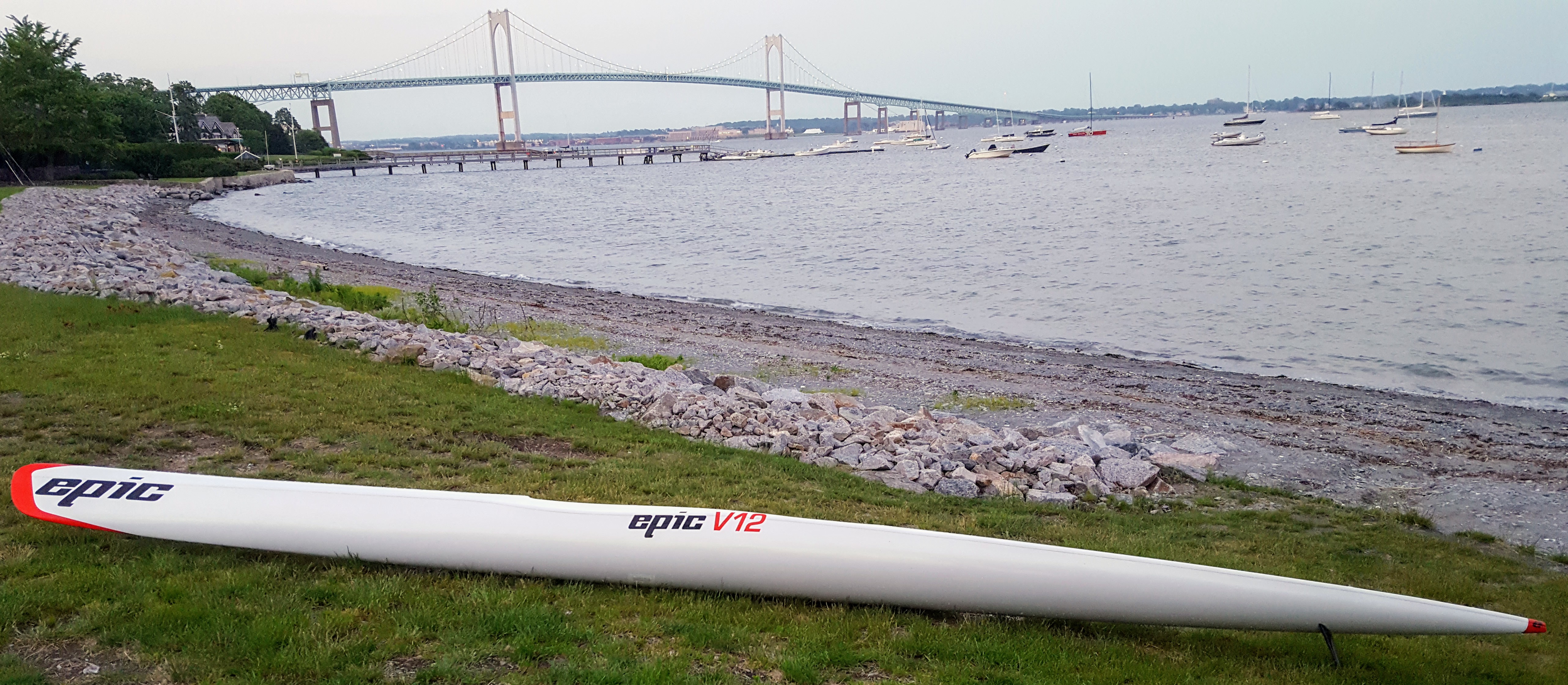
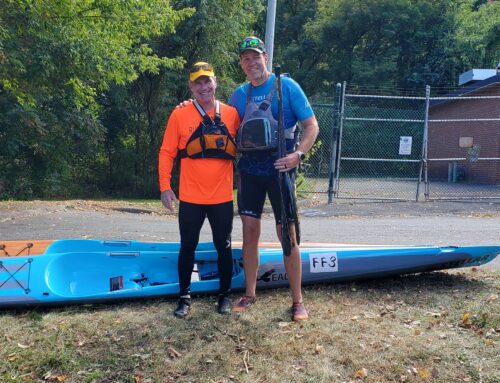
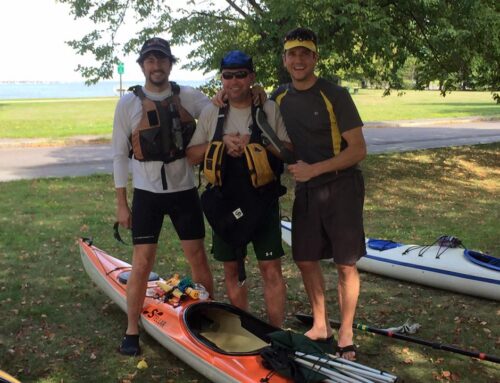
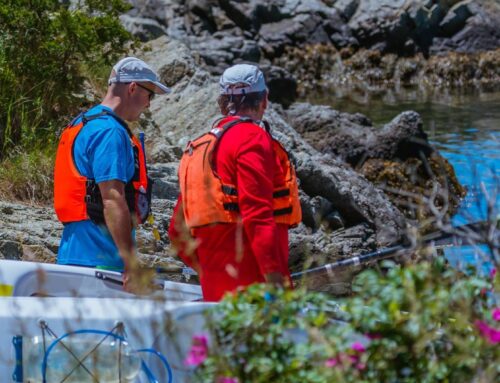
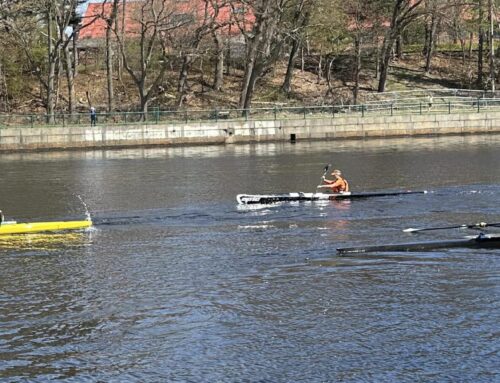
Leave A Comment
You must be logged in to post a comment.